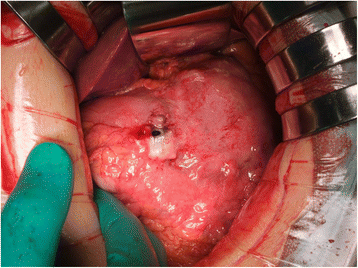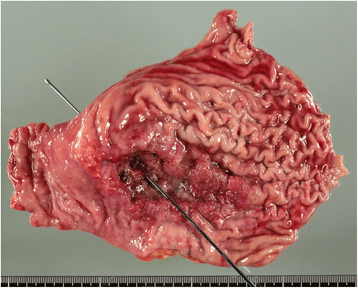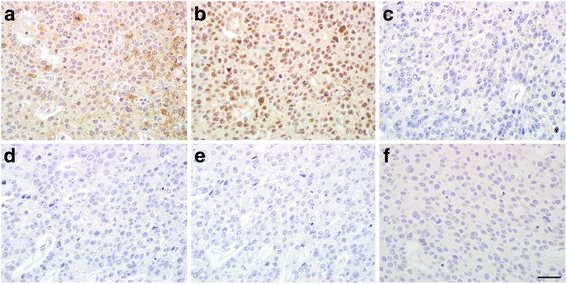Gastric hepatoid adenocarcinoma resulting in a spontaneous gastric perforation: a case report and review of the literature
- PMID: 28545511
- PMCID: PMC5445331
- DOI: 10.1186/s12885-017-3357-7
Gastric hepatoid adenocarcinoma resulting in a spontaneous gastric perforation: a case report and review of the literature
Abstract
Background: Gastric hepatoid adenocarcinoma (GHAC) is an atypical form of gastric cancer (GC) that has similar tissue morphology to hepatocellular carcinoma and frequently produces alpha-fetoprotein. We present an exceedingly rare case of GHAC resulting in a spontaneous gastric perforation.
Case presentation: A 61-year-old man presented at our institution complaining of abdominal and back pain. A computed tomography scan revealed a spontaneous gastric perforation with a solitary liver tumor and lymph node swelling. Following a diagnosis of advanced-stage GC with a gastric perforation, perforative peritonitis, multiple lymph node metastases, and a solitary metastasis of the lateral segment of the liver, the patient underwent distal gastrectomy. Histopathology of the resected specimen revealed that the tumor cells were arranged in a hepatoid pattern. On immunohistochemical staining, the tumor cells were positive for alpha-fetoprotein and Sal-like protein 4. Thus, the patient was diagnosed with GHAC. Hepatic resection of the solitary liver metastasis was performed. However, recurrence occurred and the patient achieved complete response following tegafur/gimeracil/oteracil-based chemotherapy.
Conclusions: GHAC is a highly malignant histological subtype of GC. We reported on an extremely rare case of GHAC resulting in a spontaneous gastric perforation and reviewed the literature, including epidemiological data, treatment regimens, and the association between GHAC and alpha-fetoprotein-producing GC.
Keywords: Alpha-fetoprotein; Case report; Gastric cancer; Gastric perforation; Hepatoid adenocarcinoma.
Figures





References
Publication types
MeSH terms
Substances
LinkOut - more resources
Full Text Sources
Other Literature Sources
Medical
Miscellaneous

